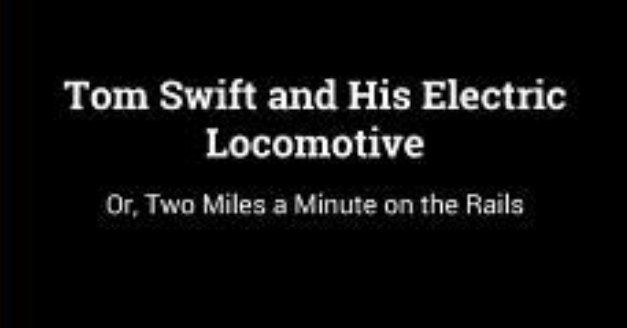CHAPTER IV — Tom Swift and His Electric Locomotive
byCHAPTER IV – Tom Swift and His Electric Locomotive brings the reader into a late-night conversation charged with tension and excitement. Tom Swift and Mr. Damon arrive at Ned Newton’s residence, confident that the night’s startling events must be shared immediately. Their recent encounter with a highwayman near Ned’s home is presented with a blend of seriousness and humor. Mr. Damon, ever animated, blames the incident on the chaos that tends to follow Tom’s inventive pursuits. Despite the danger, they treat the situation lightly, using it as a springboard to introduce the night’s deeper revelation. The visit transitions into a private discussion that hints at something far more important than a roadside theft.
Mr. Damon’s excitement propels Tom to disclose a transformative business opportunity. Tom explains that the Swift Construction Company has been approached by the president of the Hendrickton & Pas Alos Railroad with a bold proposal. The task is to develop an electric locomotive capable of reaching speeds of two miles per minute—a concept nearly unimaginable at the time. Both Ned and Mr. Damon are astonished, but Tom is already envisioning solutions. He sees the challenge not as a risk but as a gateway to revolutionize how railroads operate. The electrification of transport could drastically reduce dependence on coal and oil, cutting costs and emissions alike.
Tom’s forward-thinking nature anchors the conversation. He references the ongoing interest in replacing steam with electric power, noting how current solutions—like the Jandel locomotive—fall short, especially on mountainous terrain. The proposed route through the Pas Alos Range demands both speed and endurance. Tom is certain that with the right design, an electric engine can outperform outdated steam locomotives. He outlines how improvements in torque, motor cooling, and regenerative braking could help overcome terrain-related limitations. His focus on efficiency and technical soundness reassures his companions that the project, though ambitious, is well within their reach.
Amid this technical optimism, the memory of the earlier robbery resurfaces. Tom’s missing wallet and the deliberate nature of the attack raise suspicions. The possibility that their discussion was overheard or leaked adds a layer of tension. Ned speculates that the culprit may be a local informant acting on behalf of a rival. This adds a new dimension to the problem—industrial sabotage may already be in play. As they reflect on this, the group realizes that their path forward may involve not just technical hurdles, but also strategic defense against competitive interference.
While the worry over espionage lingers, Tom doesn’t let it derail his momentum. He reassures the group that every measure will be taken to keep the project confidential. Trust among the trio is solidified in this moment—Ned with his business insight, Mr. Damon with his unshakeable belief, and Tom with the technical vision. They agree to proceed, not blindly, but with increased vigilance. It is clear that innovation alone will not guarantee success. Secrecy and teamwork are equally critical in a landscape where rivals may go to great lengths to halt progress.
Tom’s ambition also reflects broader trends of the early 20th century. During this time, electric trains were beginning to show promise in Europe and parts of the U.S., but their development was often hindered by infrastructure limitations and skepticism. Tom’s vision fits into a historical moment when bold prototypes were needed to prove electric transit could scale. Readers unfamiliar with the history of electrification can appreciate that projects like Tom’s mirror real breakthroughs made by pioneers in rail innovation. His story captures that spirit—equal parts imagination, technical precision, and readiness to challenge outdated systems.
In this chapter, the narrative expertly mixes adventure, technological insight, and looming mystery. The electric locomotive becomes more than a machine—it represents a shift in how transportation is viewed and funded. Tom isn’t just building a faster train; he’s taking on the responsibility of redefining industrial limits. And in doing so, he invites allies and enemies alike to take notice. Whether his invention will lead to a brighter future or more intense conflict remains to be seen, but one thing is clear: Tom Swift is fully committed to leading the charge.

